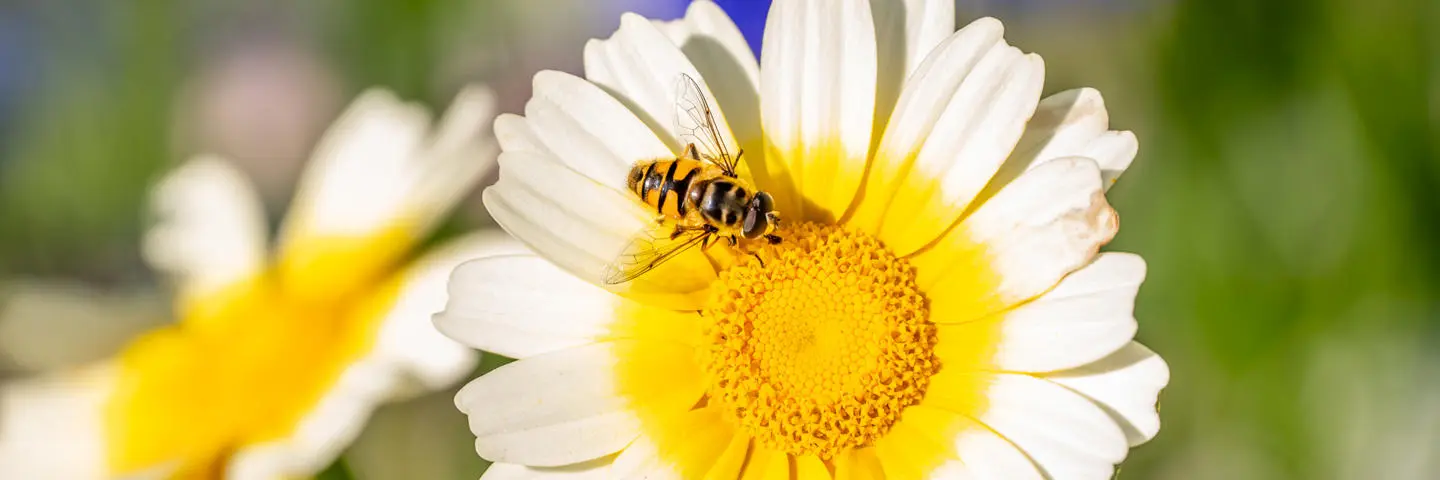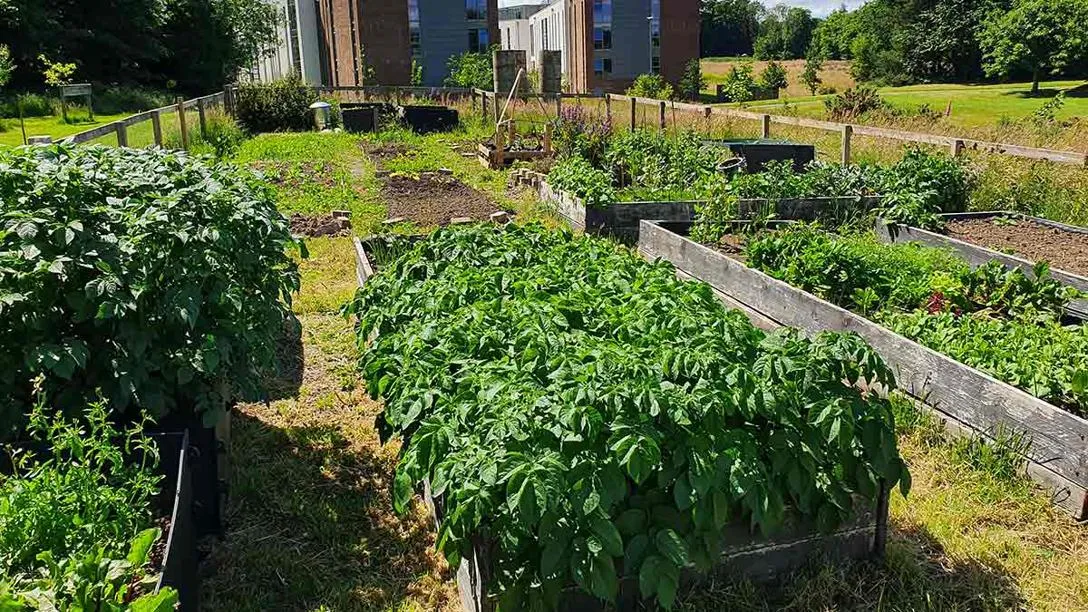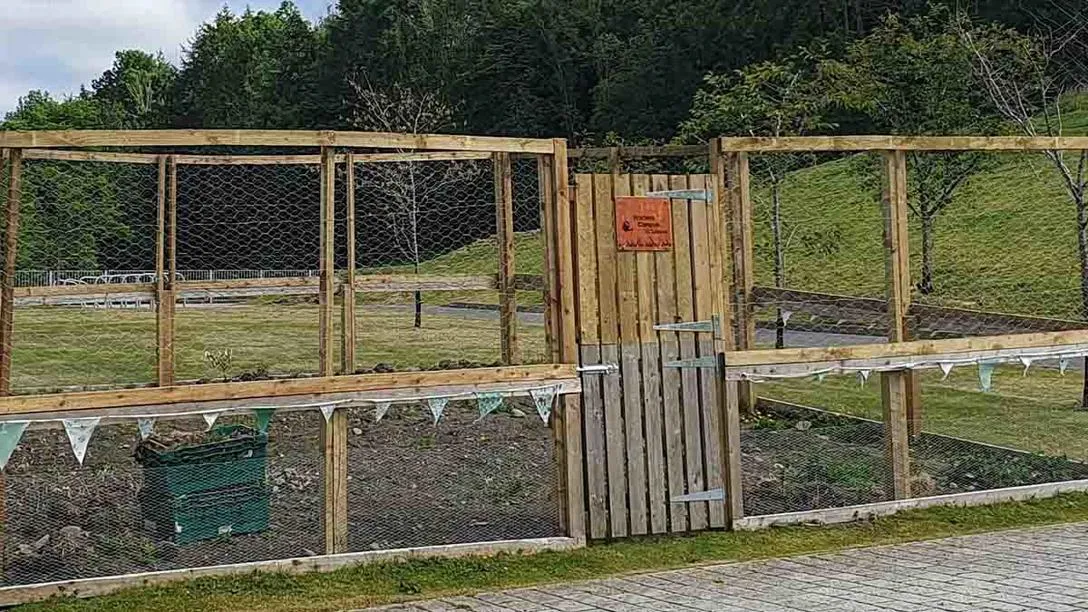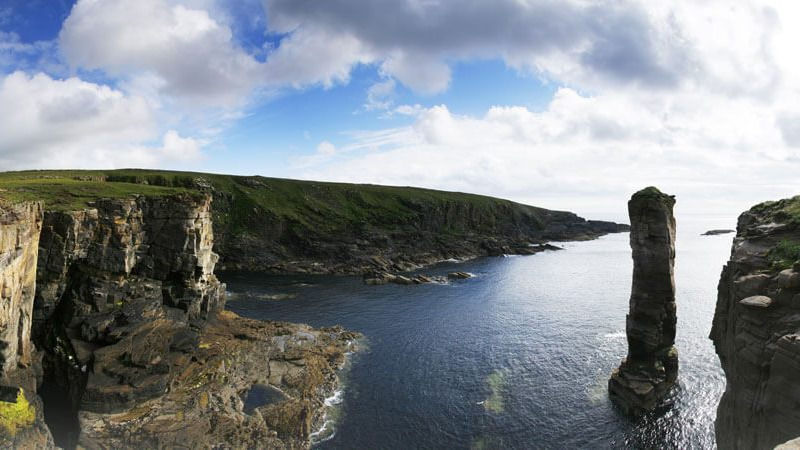Biodiversity

Our Edinburgh campus
On the edge of one of world's most beautiful cities, with an exceptional quality of life, our Edinburgh campus is set on 380 acres of park and woodland. Its mix of habitats make it the focus of significant biodiversity preservation efforts and it offers our campus community fantastic opportunities to appreciate the local natural environment. The centre of the campus, the Lawn and Central Woodlands hold the Green Flag Award reflecting achievements across criteria including access, biodiversity. conservation and community involvement. There is also a busy campus allotment, managed by the grounds and estates team, where students and staff can connect over growing their own food.

Apply for an allotment
If you are interested in applying for an allotment on the Edinburgh campus please email Robbie Fraser at r.l.fraser@hw.ac.uk
Campus Trails
Staff, students and our local community can enjoy a selection of themed campus trails on foot. by bike or with their four-legged friends. Interactive versions of our Discovery Trail and Tree Trail allow you to explore and chart your location in real time via a mobile device.
Our Scottish Borders campus
Located in a countryside location the small town of Galashiels, our Scottish Borders campus is situated at the heart of Scotland's luxury textile industry. Galashiels is located on the River Tweed, which during the 19th Century provided hydropower capable of powering several textile mills along the banks of the river. One of these mills now forms our School of Textiles, a centre of excellence in design and textiles, enabling the development of a more sustainable fashion industry and modern textiles.
An allotment area has been built immediately behind the main accommodation area (Jean Muir Student Village) to enable staff and students to grow herbs and vegetables, providing access to gardening tools and allotment plots. If you are interested in applying for a plot please contact Lou Dean at Louise.Dean@hw.ac.uk

Currently in development beside the allotment is an outdoor social area, which will feature a mural to be co-designed by students and a local artist, inspired by sustainability themes relevant to fashion and textiles.
Our Orkney campus
Our Orkney campus, the International Centre for Island Technology (ICIT) is a world-leader in research and innovation in renewable energy, marine science and environmental resources. Located in the coastal town of Stromness, it is at the centre of a thriving marine renewables industry, driving the energy transition not just in Orkney, but globally. Steeped in over 5000 years of history, with its clean, rich environment and over 500 miles of diverse coastal habitats, our Orkney campus presents a living laboratory in which full appreciation can be gained of the processes and challenges involved in creating sustainable solutions to meet the energy needs of society.

A natural, living laboratory
The unique location of the Orkney campus, on the edge of Scapa Flow and the Pentland Firth, enables unhindered access to world class renewable energy resources and internationally renowned testing facilities. In combination with the Flotta Oil Terminal, extensive aquaculture and fishing industries, plus a wealth of maritime expertise, we are able to provide a unique setting for a range of teaching, research and testing activities.
Our Malaysia campus
Our Malaysia campus, located in Putrajaya, sits on a beautiful 4.8 acre lakeside site. It forms part of Putrajaya Lake's ‘green continuum', in which stringent environmental standards are promoted and expected. It provides a state of the art teaching, learning and research environment.
The ‘green campus' is remarkable for having the first living grass roof of its kind in Malaysia. At 300 metres long and 30 metres wide, it is the most recognisably sustainable feature of the campus. The roof shades the naturally ventilated spaces below, reduces thermal transmittance, and acts as an observation deck, accessible by glass lift. Other environmentally friendly, passive design features include campus lighting ‘powered' by the maximum use of natural daylight, a rainwater harvesting system and optimised air-conditioning and thermal control systems.